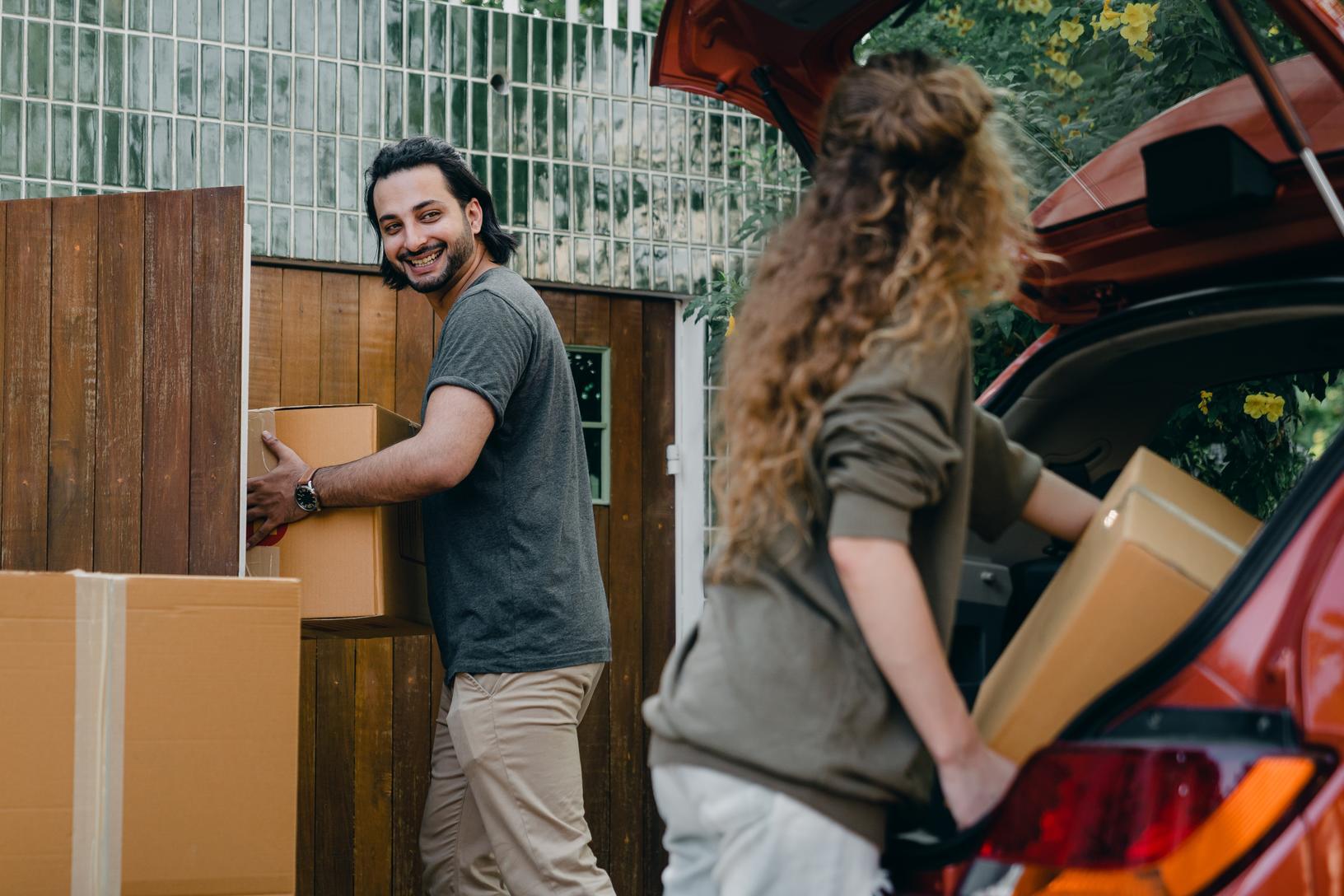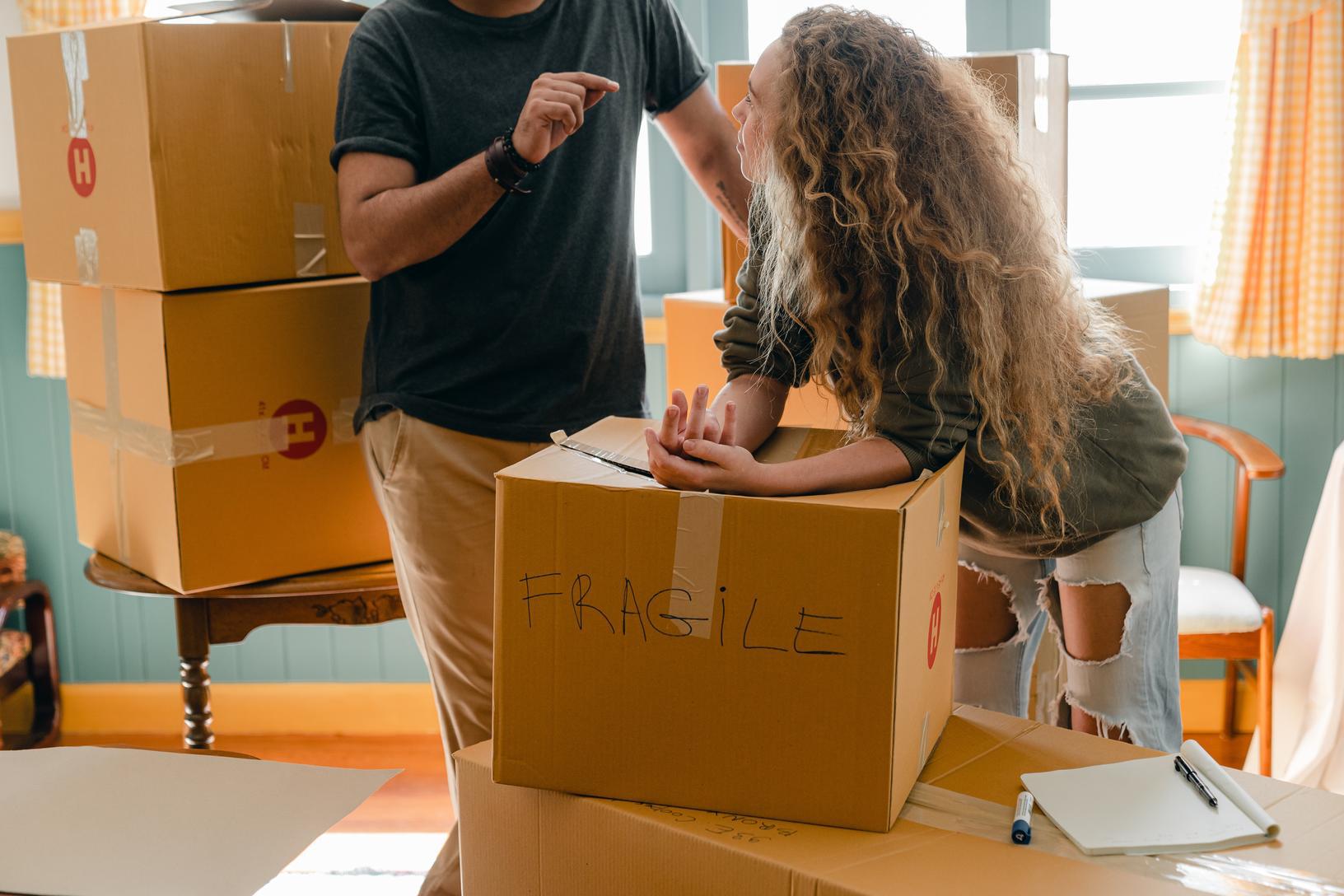Last Minute Moving Tips
Updated May 2023

It's easy to be overwhelmed during a move, especially if you feel rushed. But if you pack efficiently, you can stay organized through the chaos.
In a perfect world, you’d have at least eight weeks to plan and prepare for a move. But sometimes extenuating circumstances get the best of us and you have to plan a last-minute move. If you need to move out of your current home with very limited time to pack and prepare, don’t worry — there are a few strategies that you can use to make your experience as smooth as possible.
Here are some last-minute moving tips you should consider:
1. Ask for help!

Family and friends are great resources when moving. They can help you move heavy objects and sort through things quickly.
As the saying goes, “Two heads are better than one.” If you are pressed for time, ask other friends and family to help you prepare for the move. Be sure to give them a clear idea of what you need them to do before you enlist their assistance so they can make use of their time as efficiently and effectively as possible. For example, you could ask one person to bubble wrap all glassware while someone else packs up books.
2. Downsize and minimize.
Consider how much space and storage you'll have at your next home. Even if you're moving into a larger place, downsizing before you move will help expedite the packing and unpacking process. After all, the fewer items you own, the less time you’ll spend on packing and moving your stuff. As an added bonus, you'll feel much lighter afterward without all the unnecessary clutter weighing you down.
3. Set aside your daily essentials.
Before packing anything up, gather the things you absolutely need on a daily basis. This might include vitamins or medication, toiletries, and enough clothing to last until you fully move in. This will make it easier to focus on packing everything else up efficiently.
4. Sort your valuables.

Set aside valuables for extra careful packing and placement.
Some people think that it is quicker to pack everything in a hurry and sort it out later on, but this is not always true. The first thing you need to do is take a step back and take another look at everything you own. Get rid of as much unneeded stuff as you can. Sort everything into 3 piles— to pack, donate, and dispose of.
If you haven’t used or worn something for over a year, you shouldn’t include it in your “to pack” pile. If your furniture has seen better days and you want to start fresh in the new place, donate it to a local charity.
5. Optimize the space and volume of boxes.
Roll your clothes when packing them into boxes to better fill every nook, cranny, and air pocket. If you own any luggage, pack the rolled clothing into your suitcases before moving on to filling the boxes. Your suitcase will still take up a few cubic feet even while empty, so you might as well fill it up. Plus, this makes it easy to transport your clothing to your new bedroom.
You've heard of companion planting — now try companion packing. Layer your dish towels between picture frames or plates to avoid damage while saving space, or put your spare blankets around your TV and other appliances when moving. Pillows also work well as effective padding for breakable items.
6. Use shopping bags.
Reusable shopping bags are the unsung heroes of moving for a few very good reasons. First of all, they have handles. No awkwardly supporting them from the bottom like you have to with boxes. Second, they serve as portion control for your move. You can fit a good amount in each of the bags, but not so much that they would be too heavy to carry yourself. This also makes it easier to start and finish unpacking one at a time. And finally, unlike boxes, once you empty a reusable shopping bag you can simply fold it up and tuck it away for storage. Cardboard boxes need to be broken down and recycled or stored away for later use.
7. Use smart packing materials.
Ideally, you should use second-hand boxes, reusable bags, and recycled materials to pack your stuff as they can save you money and are the more Earth-friendly option. However, if you’re in a hurry, it’s best to purchase your packing supplies directly from a moving store or an office supply shop. This will save you from the hassle of having to hunt down packing tape, bubble wrap, and other packing supplies since everything you’ll need is located in one place.
8. Put heavy stuff at the bottom of the boxes.
This will help balance the boxes to make them as easy to carry as possible. And when you're in a hurry to move at the last minute, sometimes stuff just gets carelessly tossed into boxes. You don't want light, delicate items like glassware to get smashed under heavier things, like books. This will also help prevent them from toppling over while inside the moving vehicle.
9. Don't overpack your boxes!

Don't try to shove everything in as few boxes as possible. This can cause headaches while moving and unpacking.
Sure, you might have help during the initial move and sporadically when friends or loved ones are available, but chances are you will be doing a lot of moving and unpacking yourself. Don't make the boxes so heavy that you can't comfortably move them yourself. Struggling with one heavy box will take longer than simply splitting the items into two lighter boxes and moving them individually. And if you get hurt moving something too heavy, that will slow down your progress for sure — maybe even to a complete halt!
10. Pack boxes for immediate storage.
Think about things that you may want to store in the attic, basement, or closet of your new home. While packing up to move, put those items in boxes and label them for storage. That way, you can immediately tuck them away and avoid unpacking them, just to store them again. Holiday decor is a good example of something you won't need for a while, depending on when you move.
11. Move furniture first; Save pets & plants for last.
Move furniture first so that you have somewhere to put things immediately. Clothing can go right into dressers, fruit bowls on top of tables, and lamps illuminated so you can see where you're going. Pieces of furniture are also usually the biggest and bulkiest items in a move. You'll have the most floor space to move around and maneuver the furniture into place if you move them in first. Then, you don't have a bunch of boxes to trip over while moving your couches.
Similarly, move your pets and plants into your new home last. Often, a door has to be propped open for extended periods of time to move items. This can easily allow pets to escape amidst foot traffic. They can also get in the way, affectionately walking alongside you and posing a trip hazard. Plants can also get in the way and will create a mess if you bump them and knock their pots over, getting dirt all over your new home's floors.
12. Hire a professional.
If you don’t have friends or family to help you out, you can always sign up for professional packing services. Many moving companies have started to offer professional packing, which is faster and safer than DIY'ing it. If you do this, you'll have more time to take care of other important tasks such as settling your utility bills and changing your mailing address.
